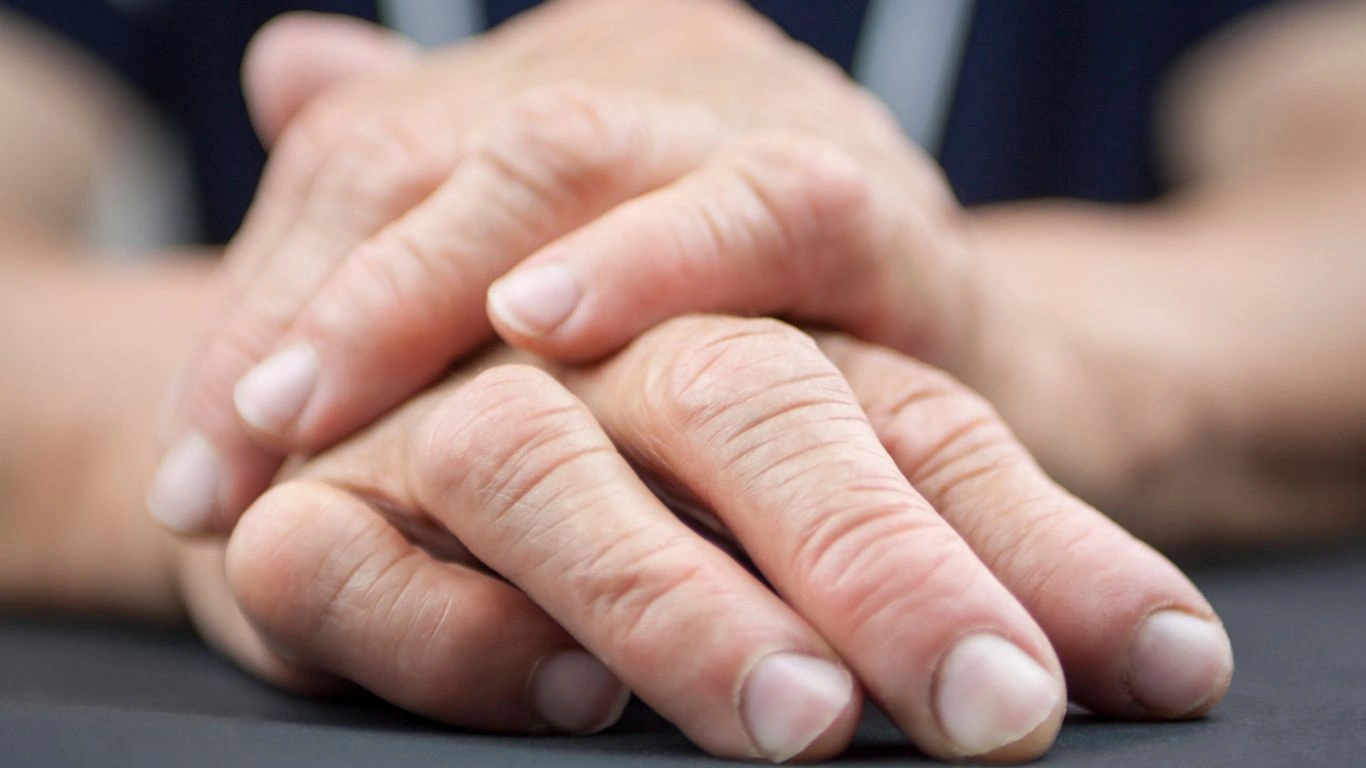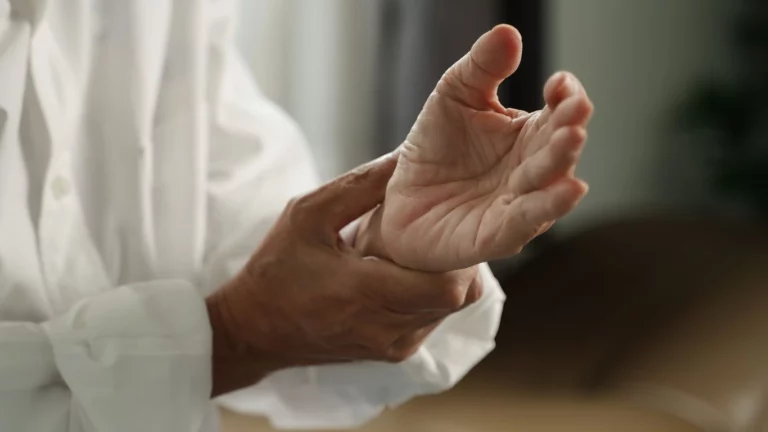The Dangerous Link Between Rheumatoid Arthritis and Obesity
If there’s one thing I’ve seen over and over again in my years working as a Rheumatology Nurse Practitioner, it’s how closely intertwined our lifestyle is with our health outcomes. And one topic that comes up again and again with my patients is the link between rheumatoid arthritis and obesity. It’s a conversation I’ve had in exam rooms more times than I can count—and for good reason. These two conditions don’t just exist alongside each other; they often fuel each other, making management of RA significantly more complicated. So, if you’re living with rheumatoid arthritis and carrying extra weight, this isn’t about judgment—it’s about connecting the dots to help you feel better and live stronger.
How Obesity Complicates Rheumatoid Arthritis

First off, let’s get one thing straight: rheumatoid arthritis (RA) is an autoimmune condition. That means the immune system, which normally protects the body from invaders, mistakenly attacks the joints, leading to chronic inflammation. But when you add obesity to the mix? You’ve basically added more fuel to that inflammatory fire.
See, fat isn’t just stored energy—it’s metabolically active tissue. That means it secretes hormones and inflammatory chemicals, called adipokines, that can ramp up immune activity. So, in someone who already has an overactive immune system like in RA, obesity can amplify systemic inflammation, potentially making joint damage and flares worse. I’ve personally seen patients’ symptoms ease up significantly just by addressing their weight—without even tweaking their medication regimen.
What the Science Says
There’s a growing body of research that supports this connection. Studies show that individuals with obesity are not only more likely to develop RA in the first place, but they also tend to have more severe symptoms and respond less effectively to certain RA medications—especially biologics. That’s a huge deal, considering how critical these meds are for halting disease progression.
In my clinical experience, I’ve noticed that patients who are overweight often require higher doses of medication and sometimes still don’t achieve the same level of symptom relief as their leaner counterparts. And let’s not even talk about how frustrating that can be for patients who are already doing everything they can to feel better.
Beyond the Joints: The Hidden Toll of Obesity in RA

When we think of RA, most people picture painful, swollen joints. But RA is a systemic disease—it affects the whole body. And when combined with obesity, the risk of complications shoots up dramatically. We’re talking:
- Cardiovascular disease: Both RA and obesity independently raise the risk of heart disease. Together? It’s a double whammy.
- Fatigue: Chronic inflammation from RA already saps your energy. Add obesity, and many of my patients describe an overwhelming, all-day fatigue that can’t be fixed with coffee or a nap.
- Reduced mobility: Extra weight stresses the joints, especially knees, hips, and ankles. That can accelerate joint damage and make exercise—which is crucial for RA management—more painful and less accessible.
- Mental health impact: Chronic pain, limited mobility, and body image issues can create a breeding ground for depression and anxiety. I always check in on my patients’ emotional well-being during follow-ups.
I had one patient—a 42-year-old woman with early RA—who couldn’t even walk a full block without pain and fatigue. She was frustrated and felt stuck. Once we incorporated a gentle weight loss plan alongside her treatment, she slowly began to regain mobility. Today, she’s walking two miles a day and feels like she got a piece of her life back. These changes may seem small on the surface, but they ripple out in big ways.
Weight Loss as a Therapeutic Tool for RA

Now, before we dive into the how, let’s talk about the why. When we address weight in RA, it’s not about vanity or fitting into a certain size. It’s about reducing systemic inflammation, improving mobility, and enhancing medication effectiveness. I always stress that to my patients—this is about feeling better and preventing long-term damage, not just chasing numbers on a scale.
In fact, even a modest weight loss of just 5-10% of your body weight can have a significant impact on RA symptoms. That’s not wishful thinking—it’s something I’ve seen play out in clinic after clinic. Less joint pressure, fewer flares, and in some cases, improved lab markers. It’s powerful stuff.
Small Steps, Big Gains
Managing RA alongside weight challenges isn’t easy—I’d never pretend it is. But it’s possible. And the first step is often the hardest: recognizing that the link between rheumatoid arthritis and obesity is real and worth addressing. Once that’s acknowledged, we can create a plan that works with your life, not against it. I always remind my patients: this is a marathon, not a sprint.
- Start with gentle movement like water aerobics or chair yoga—anything to keep joints active without too much strain.
- Work with a dietitian (if possible) who understands both autoimmune conditions and weight management.
- Celebrate non-scale victories—like getting up the stairs easier or waking up with less stiffness.
So many people with RA feel like their bodies have betrayed them. But small, sustainable changes can actually help you reclaim that power. As someone who walks beside patients every step of the way, I can say with confidence: you’re not alone, and you’ve got more control than you think.
Inflammation, Fat Tissue, and the Autoimmune Loop

One of the most eye-opening things I’ve learned over the years is how dynamic fat tissue really is. We often think of fat as just extra weight—like packing peanuts the body holds onto. But it’s so much more than that. Fat cells release pro-inflammatory cytokines, like TNF-alpha and IL-6, which play a direct role in the joint inflammation we see in rheumatoid arthritis. That means the more excess fat tissue a person carries, the more of these inflammatory messengers are circulating in the body. It’s like having a low-grade fire burning in the background 24/7.
This inflammation doesn’t just stay in fat cells or joints either. It affects the cardiovascular system, the gut, even mental health. It’s all connected. That’s one reason I always tell my RA patients who are struggling with their weight, “This isn’t about blame—it’s biology.” Once we shift the narrative from shame to understanding, real healing can begin.
Why Some Patients Gain Weight After RA Diagnosis
Let’s be real for a moment: a lot of people actually gain weight after being diagnosed with RA. I’ve seen it in my own patients time and time again. And it’s not because they’re lazy or overeating—it’s often because they’re in pain, fatigued, and scared to move. When your joints ache with every step, even simple daily movement becomes a struggle.
Plus, many RA medications, especially corticosteroids like prednisone, are known to increase appetite and cause fluid retention. That can make weight management feel like an uphill battle. I remember one of my patients saying, “I feel like the meds help my joints, but hurt everything else.” That hit me hard. And she’s not wrong—this is why it’s crucial we look at treatment plans holistically.
Creating a Realistic Weight Management Plan for RA

If there’s one takeaway I wish every RA patient could hear, it’s this: you don’t have to lose a massive amount of weight to see real benefits. In fact, even small, sustainable changes can significantly reduce inflammation and joint pain. It’s not about perfection—it’s about progress.
Practical Tips That Work in Real Life
Here are a few go-to strategies that I’ve shared with patients over the years. These aren’t one-size-fits-all solutions, but they’re great starting points:
- Focus on anti-inflammatory foods: Think colorful veggies, omega-3 rich fish like salmon, whole grains, nuts, and olive oil. The Mediterranean-style diet is a fantastic base.
- Keep it low impact: Swimming, cycling, tai chi, and walking on softer terrain (like grass or a track) are easier on the joints and still provide cardiovascular benefits.
- Use mobility aids without shame: If a cane or knee brace helps you stay active, use it proudly. You’re supporting your body’s ability to move—that’s empowering, not a setback.
- Set micro-goals: I’ve had patients start with walking to the mailbox and back, and we celebrated that win like it was a marathon. Because for them? It was.
I often help patients connect with physical therapists and registered dietitians who truly understand autoimmune conditions. That collaboration can make all the difference. No more cookie-cutter advice—just real, tailored support.
The Mental Health Side of the RA-Obesity Equation

One topic that doesn’t get enough attention is how both RA and obesity can take a serious toll on mental health. Chronic pain is exhausting—not just physically, but emotionally. Add in the frustration of weight struggles, and you’ve got a perfect storm for anxiety, depression, or both. I’ve seen patients break down in tears—not from pain, but from feeling like they’re stuck in a body that won’t cooperate.
This is where support systems are everything. Whether it’s talking to a therapist, joining a local RA support group, or even just having a friend who “gets it,” having someone to talk to can make a huge difference. I often refer my patients to mental health professionals who specialize in chronic illness—and the feedback I get is overwhelmingly positive. It’s one of those things that many people don’t realize they need until they’ve got it.
Reframing the Narrative
I always tell my patients: your body isn’t the enemy—it’s the battleground. And when you’ve been fighting an internal war with RA, of course you’re going to feel worn down. But that doesn’t mean you’re powerless. You can shift the tide. Not by doing everything at once, but by doing one thing at a time.
For example, one of my patients started by drinking one extra glass of water a day and reducing her soda intake. That one change snowballed into cooking at home more, walking short distances, and eventually losing 12 pounds over six months. Her labs improved, her flares decreased, and most importantly—her confidence came back. And it all started with a single glass of water.
This isn’t just about losing weight—it’s about regaining control, rediscovering joy in movement, and reducing the hold inflammation has on your body and your life. I’ve seen it happen. I’ve helped people make it happen. And if you’re reading this? You can do it too.
When Weight Loss Becomes Part of the Treatment Plan

So here’s the thing most people don’t realize: weight loss in rheumatoid arthritis isn’t just about aesthetics—it’s clinical. As a Rheumatology Nurse Practitioner, I’ve seen firsthand how even modest, steady weight loss can completely shift a patient’s RA journey. Their inflammation levels drop. Their flares become less frequent. Sometimes, their need for medication decreases. And the best part? Their quality of life improves in ways that can’t be measured by a lab value or a number on a scale.
But I’ll be honest—sustainable weight loss in someone dealing with RA is no walk in the park. It takes patience, support, and realistic goals. This isn’t about crash diets or impossible workout routines. We’re talking about building habits that feel doable—even on days when your joints are flaring up or you didn’t sleep well because of the pain.
Building a Multidisciplinary Support Team
I always tell my patients: don’t try to do this alone. Managing RA and tackling weight challenges is a team sport. And your healthcare team should include more than just your rheumatologist. Ideally, you’d have access to:
- A registered dietitian who understands inflammatory conditions and can guide you without judgment.
- A physical therapist or movement specialist who can build a gentle exercise routine tailored to your limitations.
- A mental health provider who can help you process the emotional weight of chronic illness and the body changes that come with it.
I’ve worked alongside some amazing multidisciplinary teams, and when everyone’s on the same page? That’s when the magic happens. Patients feel seen, heard, and supported—because this journey is about so much more than just joints or scales.
Making Movement Less Intimidating

I’ll never forget one of my patients—a man in his late 50s who was newly diagnosed with RA. He hadn’t exercised in years and was terrified of making his joint pain worse. We started small—just stretching in the morning and standing up every hour. Then, we added a short walk around his cul-de-sac. Fast forward a year, and he was doing water aerobics three times a week and had lost 15 pounds. He told me, “I thought my body was broken. Turns out it just needed me to listen.”
That story sticks with me because it’s such a great reminder that movement doesn’t have to be intense to be effective. In fact, when dealing with RA and weight challenges, low-impact, consistent movement is usually better. It reduces joint stiffness, supports muscle tone, and boosts mental health—all without overwhelming the body.
Try These RA-Friendly Movement Ideas:
- Chair yoga or seated stretching on tougher days when your joints are flaring.
- Water walking or swimming to ease joint impact while staying active.
- Resistance bands for strength training without heavy weights.
- Walking buddies—friends, family, or even pets—to keep things social and fun.
The goal isn’t to become a fitness guru—it’s to move your body in ways that feel good, help manage your symptoms, and support your long-term health goals. And every little bit counts, truly.
Empowering Yourself with Knowledge and Compassion
When I talk to patients about the link between rheumatoid arthritis and obesity, I do it with empathy and honesty. Not because I want them to feel guilty, but because I want them to feel informed and empowered. I want them to know that RA doesn’t mean they’re doomed, and carrying extra weight doesn’t make them weak or lazy.
In fact, many of the people I’ve worked with are some of the most resilient, strong-willed individuals I’ve ever met. They’ve been through years of pain, countless appointments, medication side effects, and flare after flare—and they still keep showing up. That kind of strength deserves to be honored, not judged.
If this article resonates with you, I hope it reminds you that healing isn’t linear. Progress doesn’t always look like dramatic transformations. Sometimes it’s just waking up with a little less stiffness. Walking a little farther than yesterday. Choosing water over soda. Saying “yes” to yourself a bit more often.
And most importantly—giving yourself grace when it gets hard.
- NIH – Offers evidence-based research on rheumatoid arthritis and obesity.
- Health – Includes practical wellness articles, lifestyle tips, and personal stories.
- CDC – Great for public health info and statistics related to RA and chronic conditions.
- Arthritis Foundation – Fantastic resource for community support, exercise ideas, and advocacy.
Disclaimer
This article is for informational purposes only and is not a substitute for professional medical advice, diagnosis, or treatment. Always consult your physician, nurse practitioner, or a qualified healthcare provider regarding any questions or concerns you may have about a medical condition. The views expressed here are based on my experience as a Rheumatology Nurse Practitioner and should be interpreted within the context of individualized care.

Tarra Nugroho is a dedicated Nurse Practitioner with a strong foundation in family and preventive care. She brings both compassion and clinical expertise to her practice, focusing on patient-centered care and health education. As a contributor to Healthusias.com, Tarra translates medical knowledge into clear, empowering articles on topics like women’s health, chronic disease management, and lifestyle medicine. Her mission is simple: help people feel seen, heard, and informed—both in the clinic and through the content she creates. When she’s not caring for patients, Tarra enjoys weekend hikes, plant-based cooking, and curling up with a good health podcast.






